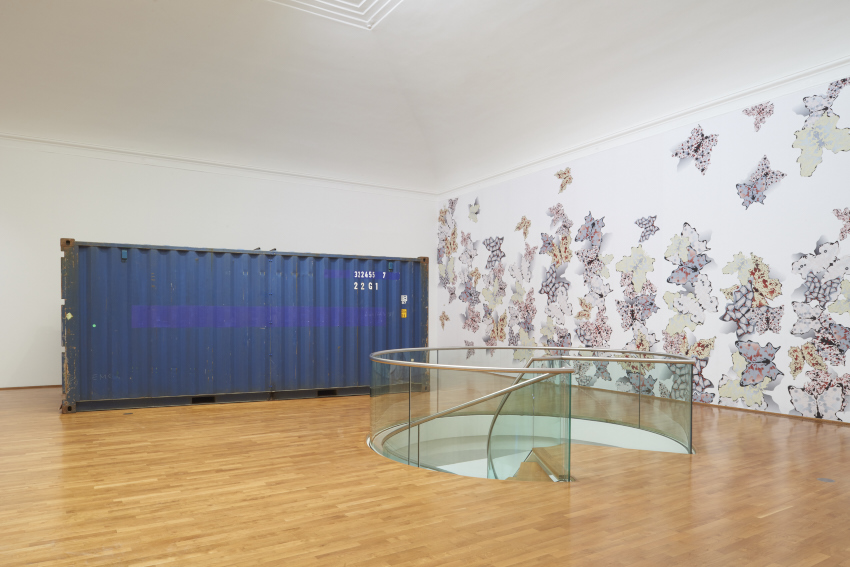
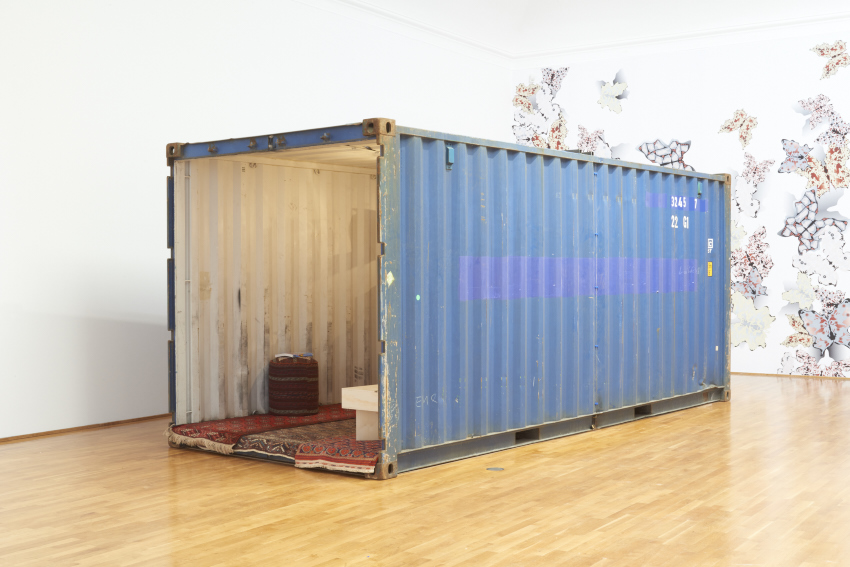
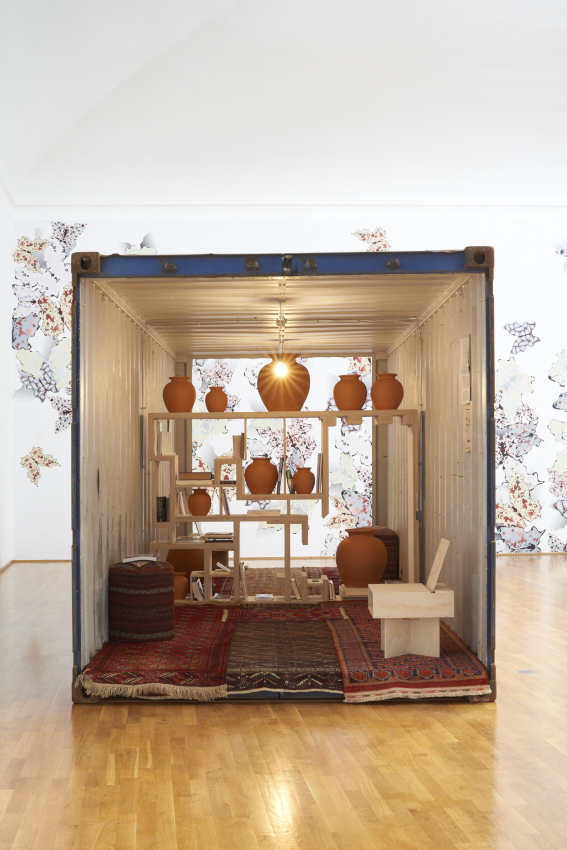
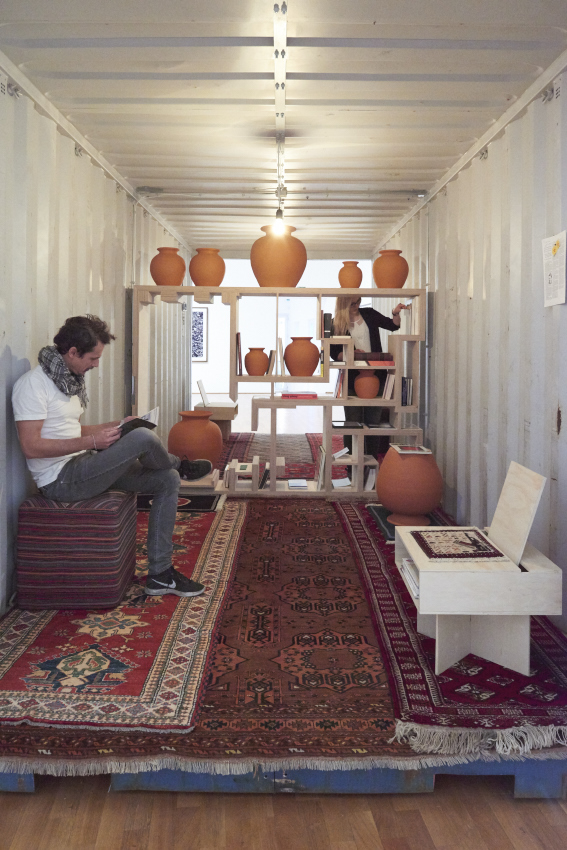
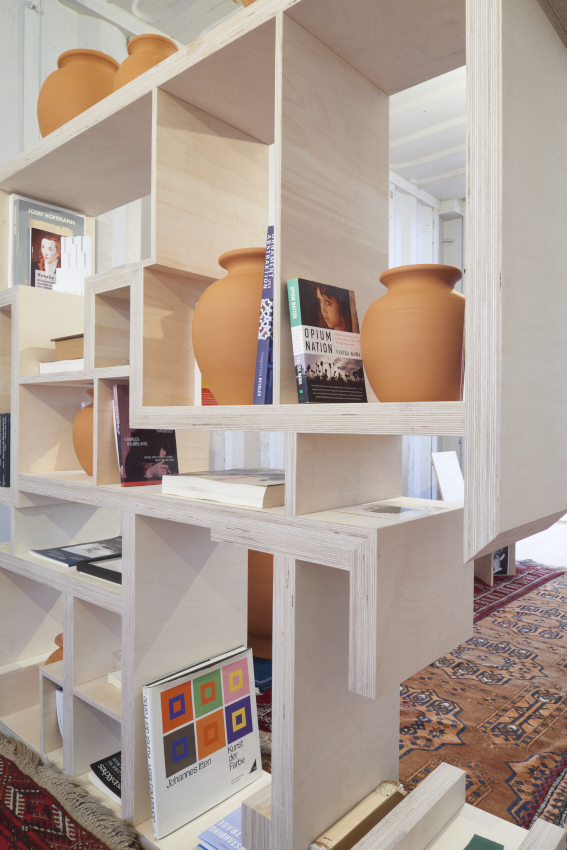
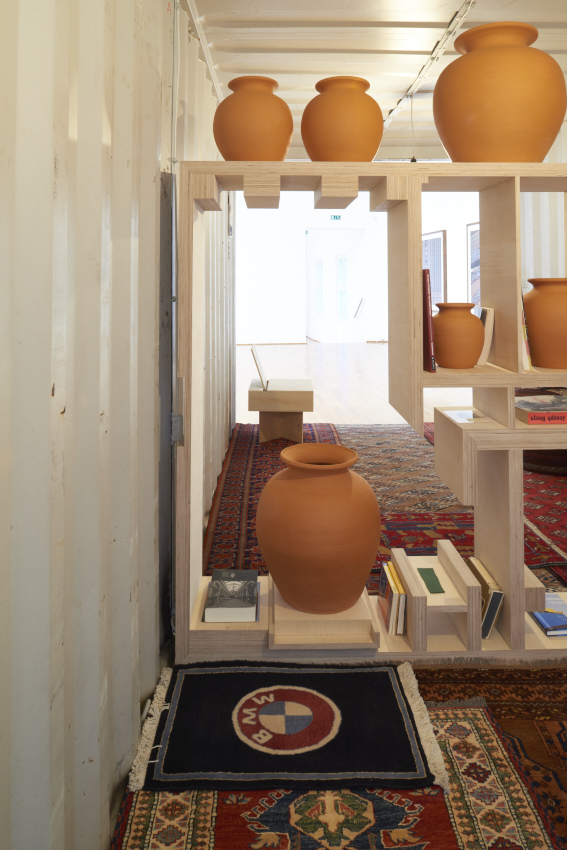
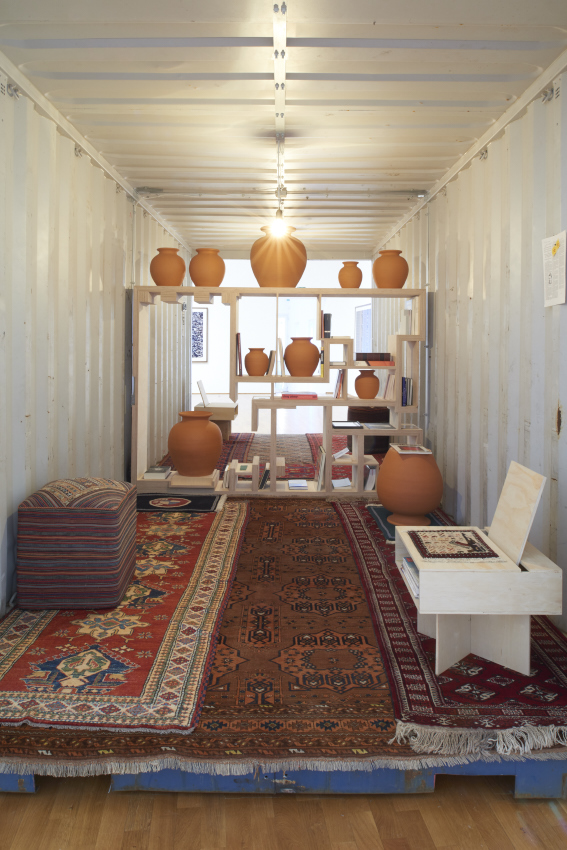

Loos Opium Den
2015
Installation view, Museum Villa Stuck, Munich
Repurposed shipping container, rugs, terracotta, ephemera, wood, metal, shelving, books, ambient lighting.
Loos Opium Den, commissioned for Common Grounds at Museum Villa Stuck, Munich, transforms a shipping container into a reimagined opium den, where cultural memory functions as both refuge and illusion. The title merges Adolf Loos’s rejection of ornamentation with Marx’s notion of religion as the “opiate of the people,” questioning how heritage is preserved, stripped, or commodified. A bookshelf, constructed using the floor plans of Villa Müller as a blueprint, references Loos’s manifesto Ornament and Crime and his imperialist view of unadorned forms as markers of progress. This austerity contrasts with custom terracotta pots shaped as poppy buds—the botanical source of opium—symbols of ornamental craft and histories of trade, addiction, and colonial expansion.
This space, both inviting and unsettling, is caught between preservation and erasure, authenticity and artifice. Within the shifting “common grounds” of global exchange, Loos Opium Den asks: does cultural preservation resist disappearance, or does it simply repackage the past as a consumable relic, numbing us to what has already been lost?
